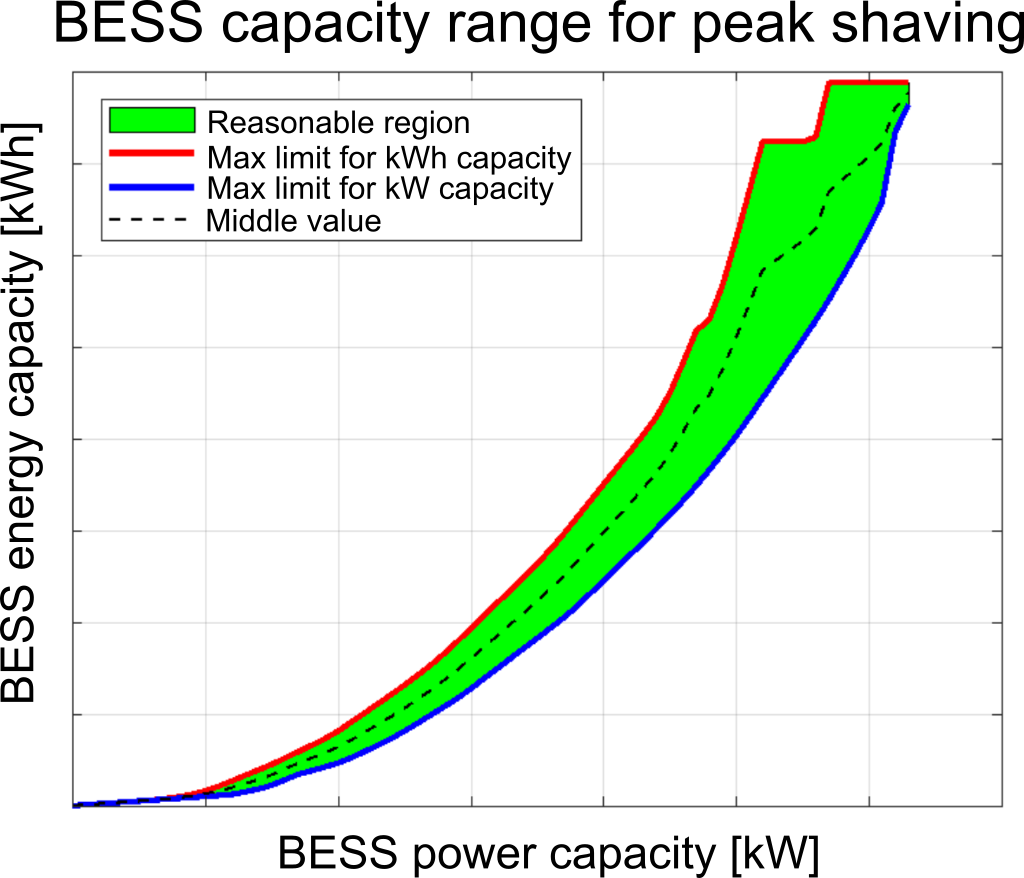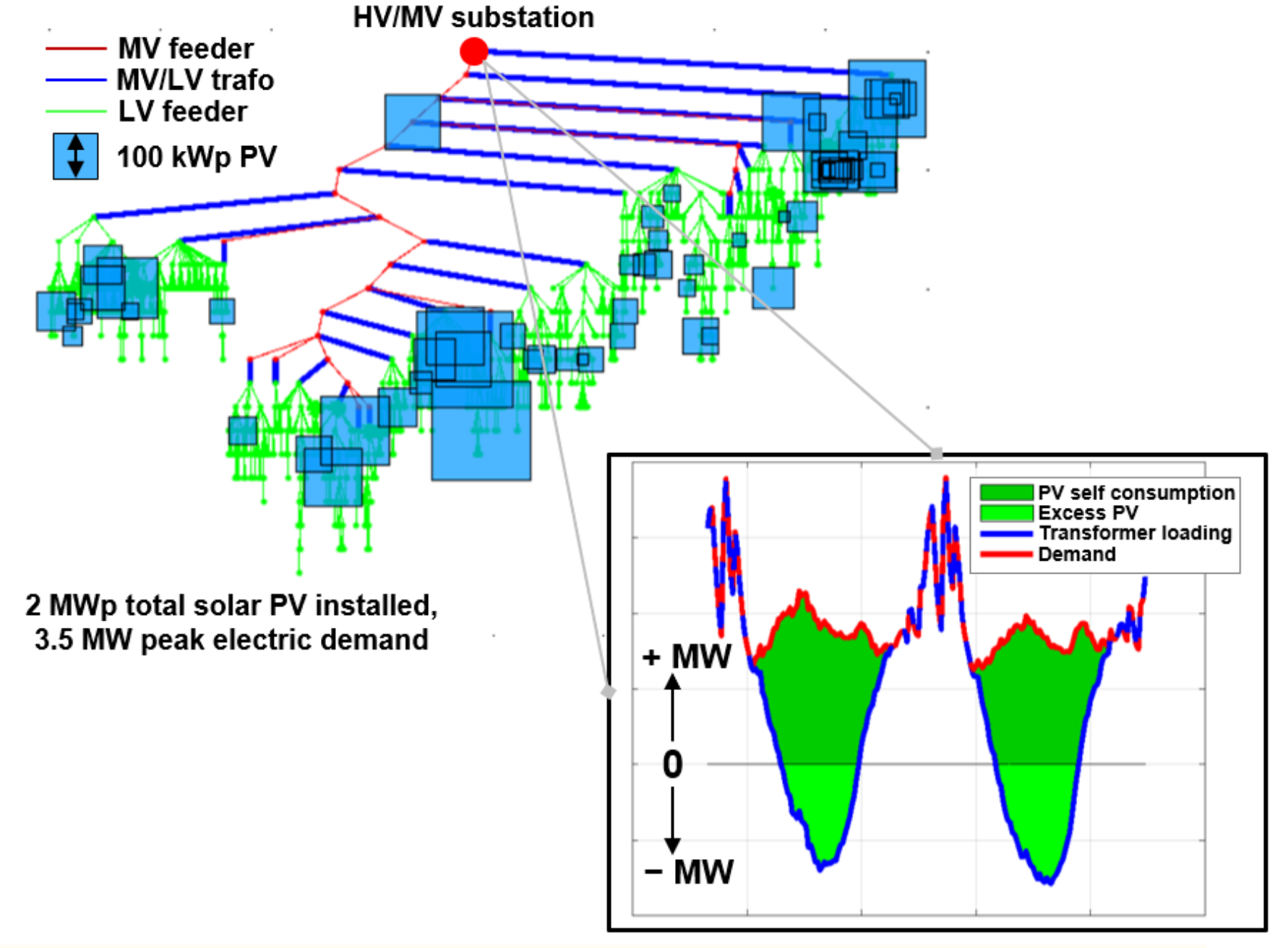Battery Energy Storage System (BESS) sizing and location
- Increase the self-consumption of local PVs, avoid load peaks
- Determine the optimal use-case and location for BESS.
- Identify possible battery dimensions.
- Analyse sensitivity to network parameters and consumer behavior.
- Evaluate economics of use-cases, investment analysis and risks.
- Assess the environmental impacts (e.g., fire security risks, CO2 footprint, recycling) of various BESS technologies
- Estimation of household profiles using sparse measurements.
- Load flow analysis, using network data, shows no congestions at potential battery locations.
- Time series analysis in hourly resolution for whole year to identify the battery dimension for peak-shaving and self-consumption.
- Economic and investment analysis to determine optimal battery size.
- Identifying the BESS technology by taking into account the utility considerations on environmental impacts.
- Contacting vendors, collecting and analyzing offers.


